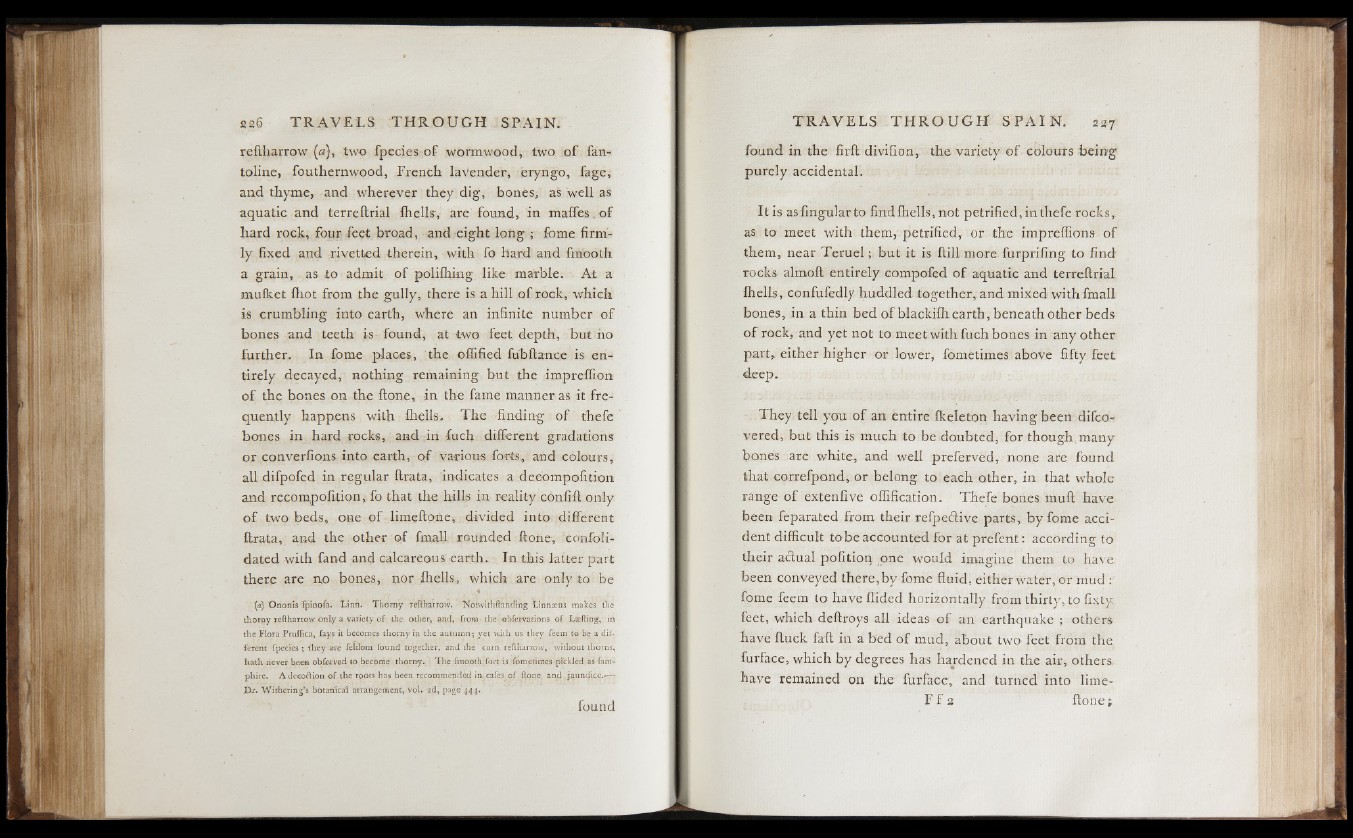
reitharrow («), two fpeciesof wormwood, two o f fan-
toline, fouthernwood, French lavender, eryngo, fage,
and thyme, and wherever they dig, bones, as well as
aquatic and terreilrial ill ells, are found, in maifes. of
hard rock, four feet broad, and eight long ; fbme firmly
fixed and rivetted therein, with fo hard and fmooth
a grain, as to admit of poliihing like marble. At a
mulket ihot from the gully, there is a hill of rock, which
is crumbling into earth, where an infinite number of
bones and teeth is found, at two feet depth., but no
further. In forae places, the offified fubilance is entirely
decayed, nothing remaining but the impreffion
of the bones on the itone, in the fame manner as it frequently
happens with ihells. The finding of thefe
bones in hard rocks, and in fuch different gradations
or converfions into earth, o f various forts, and colours,
all difpofed in regular flrata, indicates a decompofition
and recompofition, fo that the hills in reality con lift only
o f two beds, one of Timeflone; divided into different
flrata, and the other of final! rounded itone, confoli-
dated with fand and calcareous earth. In this latter part
there are no bones, nor ihells, which are only to be
'(a) Ononis fpinofa. Linn. Thorny reliharrow. Notwithftandrng Linnaeus makes the
thorny reftharrow only a variety o f the other, and, from the-«bfervations o f Laefling, in
the Flora Prnflica, fays it becomes thorny in the autumn; y e t with us they feem to be a different
fpecles ; they are feldom found together, and the corn reftharrow, without thorns,
hath never been obferved to become thorny. The fmooth fort is fometimcs pickled as fain-
phire. Adecoftion of. the roots has been recommended in cafes-of ftone and jaundice.—
J)x. Withering’ s botanical arrangement, vol. 2d, page 444.
found
found in the firit divifion, the variety of colours 'being
purely accidental.
Itis as lingular to find ihells, not petrified, in tbefe rocks,
as to meet with them, petrified, or the impreffions of
them, near Teruel; but it is ftill more furprifing to find
rocks almoil entirely compofed of aquatic and terreilrial
ihells, confufedly huddled together, and mixed withfmall
bones, in a thin bed of blackiihearth, beneath other beds
of rock, and yet not to meet with fuch bones in any other
part, either higher or lower, fometimes above fifty feet
deep.
They tell you of an entire ikeleton having been difco-
vered, but this is much to be doubted, for though many
bones are white, and well preferved, none are found
that correfpond,. or belong to each other, in that whole
range of extenfive oilification. Thefe bones muil have
been feparated from their refpeclive parts, by feme accident
difficult tobe accounted for at prefent: according to
their actual poiition one would imagine them to have,
been conveyed there, by feme fluid, either water, or mud :
forne feem to have Aided horizontally from thirty, to fixty
feet, which deftroys all ideas of an earthquake ; others,
have ftuck fail in a bed o f mud, about two feet from the
furface, which by degrees has hardened in the air, others,
have remained on the furface, and turned into lime-
F f 2 ito n e ;